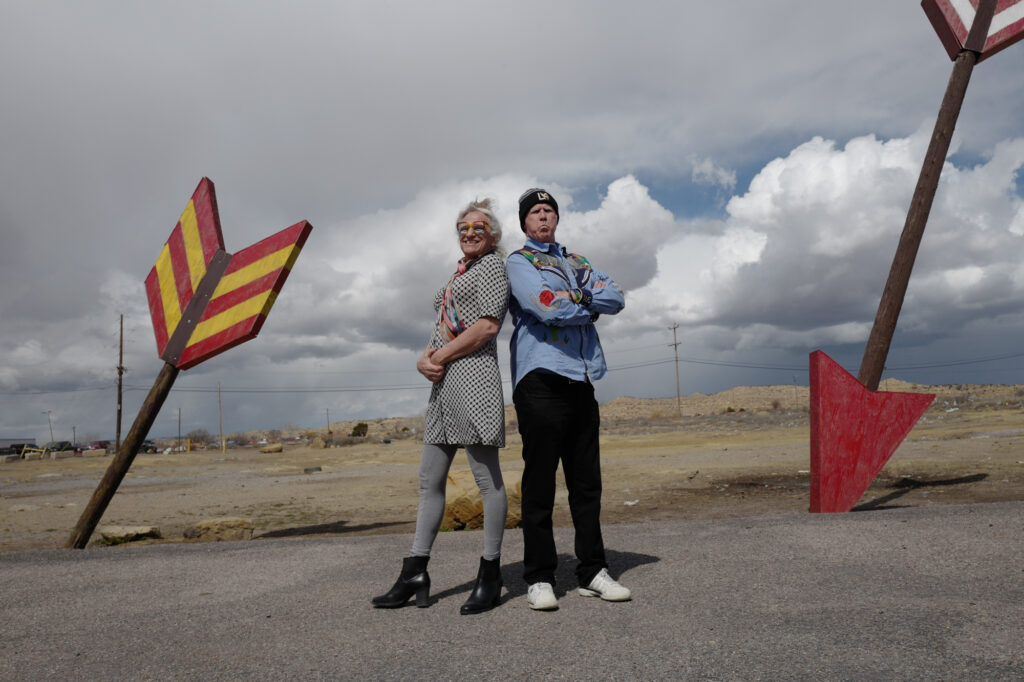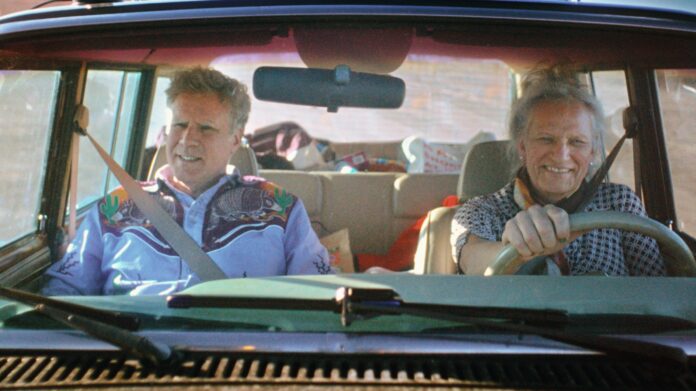“Will & Harper,” now out on Netflix, is a charming documentary that chronicles the emotional cross-country journey undertaken by comedian Will Ferrell and his friend Harper Steele, a trans woman. Harper, a head writer for “Saturday Night Live,” transitioned during the pandemic. She sent Will an email and being a supportive ally, Will suggested they combat her fears about going to places she loved — like dive bars in middle America — as a woman by taking a 16-day road trip together.
The easygoing rapport between these longtime friends is part of what makes “Will & Harper” so enjoyable. They talk openly and honestly about Harper’s transition. Will asks Harper why she chose “Harper” as her new name, and she gives a thoughtful response. Will also asks questions about Harper’s surgery, cracking a joke about her breasts, as well as her plans for dating. These conversations feel neither forced nor invasive; they satisfy Will’s (and by proxy, the audience’s) curiosity, but they also give Harper a way of processing her transition and possible responses to it.
But the film also shows Harper becoming irritated when she is misgendered by a waitress at a diner. She expresses that to Will, who comes to understand his friend’s frustration. Each stop on the road trip is designed to provide teachable moments, but, thankfully, “Will & Harper” never feels preachy. There is an episode in Indiana, where the friends go to a Pacers’ game. Harper considers the “bro-ey” attitudes she knew as a man going to basketball games, and wonders how the experience will be different as a woman. When they meet Indiana Gov. Eric Holcomb at the game, they are unaware of his negative stance on trans rights. Both regret the missed opportunity to speak out and educate him and others about trans lives.
In contrast, when they visit Peoria, Illinois, Harper meets with Dana, a trans woman, and they share their experiences about feeling different as children and the process of coming out later in life. They both like passing but hate their deep (masculine) voices. And they join Will in a karaoke bar for a fun rendition of “I Got You Babe.”
The film is about Harper’s visibility and her experiences in environments where she once felt safe and accepted. The trip helps her navigate “how I need to be seen,” she says, and Harper acknowledges, repeatedly, how Will can use his celebrity status to “run point” for her and diffuse what might otherwise be a tense situation. Moreover, she stresses that most trans people do not have that “safety net” experience even with allies. There is still fear and insecurity.
In one bar, Harper wants to see if she can make friends on her own, and asks Will to come in later to avoid having him influence others’ acceptance of her. At a speedway, Harper feels an unexpected sense of belonging that is very gratifying. However, when they get to Amarillo, Texas, Will dresses up as Sherlock Holmes and attempts to eat a 72-ounce steak in an hour (to get a free steak). The gimmick backfires, calling attention to the odd couple, and a string of transphobic tweets about Harper during the meal are damaging. Harper draws on this negative experience to share her past thoughts about suicide, a struggle faced by many trans people. In addition, a series of journal entries Harper reads from her pre-transition days also add insight into her process of self-acceptance.

“Will & Harper” is best when the friends discuss Harper’s feelings. She talks candidly about her looks even when she gets dolled up for a night out on the town in Las Vegas. She goes swimming in a public pool for the first time as a woman and has concerns about her bathing suit as many women do. And, in one of the most powerful moments, she takes Will to the house in Trona, CA, that she bought just so she could dress as a woman and be “more herself.” Harper breaks down crying, revealing how it actually magnified her issues of self-hate.
Will’s support and empathy throughout these emotional moments is not surprising, but it always feels authentic. He never quite walks a mile in Harper’s heels, but he accompanies her proudly, and without judgment. When Will meets with Harper’s adult daughters in New York, or Harper’s sister in Iowa City, there is plenty of love. A scene outside Harper’s childhood home where she gets to ride a unicycle — Harper rode one to school for two years — is poignant because it allows her to recapture a moment from her youth now as a woman. When Harper looks at photos of herself as a child, and admires one when she looks feminine, it is also very moving.
Wisely, Will lets Harper have the spotlight in most situations. This allows for greater understanding as when the friends are at the Grand Canyon, and they ask a woman to take their photo. The encounter turns into a conversation about how trans people need supportive therapists. The woman reveals she was a therapist, and regrets being ill-equipped to help a trans patient she had. This echoes Harper’s issues with her own therapist who was dismissive of her feelings about her gender dysphoria.
“Will and Harper” nicely balances the more serious discussions with some amusing moments. Will’s whining for Dunkin’ Donuts is very funny, and there are some delightful cameos by “SNL” alumni including Will Forte, who takes Will and Harper hot air ballooning, and Molly Shannon who shares a pedicure with the friends. And Kristen Wiig is contacted to write a jazzy country song for their road trip. (The film’s needle drops are pretty great).
But the most rewarding part of the story here is the opportunity to meet Harper and see the world through her eyes for two hours. At best, this documentary should help increase awareness for trans rights as well as understanding. The fear Harper faces is the unknown — she wonders: How will people react to her? But watching this film, it is hard not to respond to her jokes with laughter and her emotional moments with tears. Getting to know Harper as viewers do with “Will & Harper” is a wonderful experience.
